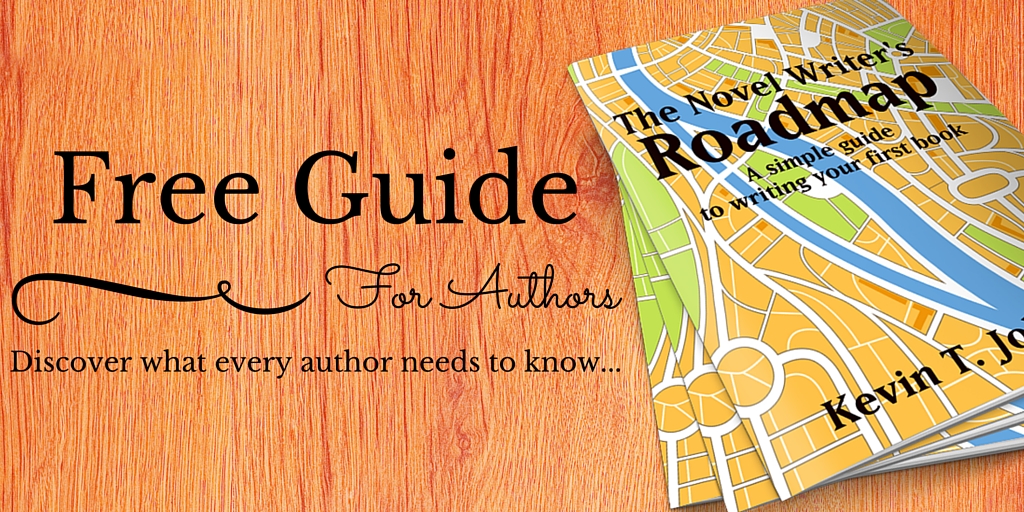You’ve completed the first draft of your novel and it has come in at around 50K words.
But you were shooting for 80K.
Now what?
How do you beef up a lean manuscript? Where do you find 30,000 more words without just adding filler or fluff?
Despair not my friend!
Here’s 8 simple methods for fleshing out your manuscript in a way that’ll not only add words, but create a more rich, engaging, and textured novel.
1. Show Don’t Tell
Rookie authors often hear the maxim “show don’t tell”.
This is not because showing is inherently better than telling in all situations. Rather, the maxim is so often repeated because beginner writers have a tendency to favor telling over showing, resulting in a story with a pace that moves too quickly and a manuscript that’s short on words.
Creating suspense, tension, and drama usually involves slooooooowing things down, stretching out a moment, and letting the reader sweat. How a writer slows down a scene is by showing instead of telling, i.e. going into more detail, which in turn means more words.
If your story is coming in short on word count, it probably means you’re doing too much telling and not enough showing. Find the moments in your story that need to be slowed down, and then get in there and add details.
Don’t just tell us the character crossed the busy street in the rain. Show us the raindrops hitting their skin, and how they dodged yellow taxis splashing water up from the puddles in the dirty gutter.
2. Add Sub-Plots
The journey your protagonist goes on, the challenges they face, and the obstacles they overcome should be the focus of your narrative, but it shouldn’t be the only story arc in your novel.
B and C plots (i.e. sub-plots) allow an author to explore characters, themes, and story events that function in relation to, alongside, or in-opposition to the main plot.
The A plot of the film The Empire Strikes Back is Luke Skywalker’s journey towards becoming a fully trained Jedi, but what really makes Empire an extraordinary film is the B plot, the incredible love story playing our between Han Solo and Princess Leia.
Look for opportunities to add sub-plots to your book and to tie them into the main plot when possible.
3. Create Establishing Shots
In cinema and television, most scenes begin with an establishing shot. This is usually an exterior shot of the building, house, or spaceship the subsequent scene plays out within. The purpose of these establishing shots is to give the viewer a sense of place, location, and geography.
Authors need to make sure they do the same work in establishing location and setting, just like filmmakers do.
Look for scenes in your manuscript that seem to be playing out in a nebulous void, and then do the work to establish a unique environment. Let the reader know about the setting the story or scene is taking place in.
There’s a reason fantasy novels are usually so long: their authors spend many words creating new and fantastic worlds. But your story doesn’t need to be set in an alternate reality to be gripping and rich. Readers can be just as easily enthralled by a delicately described bedroom, or the contents of a litter strewn alley.
4. Improve Opening Hooks and Closing Cliff-hangers
The opening paragraph of every single chapter in your book should draw the reader in, excite and titillate them. You want to give the reader a reason to continue reading the rest of chapter.
You’ll also want most chapters to end on a dramatic note of some kind, if not an all-out cliff-hanger.
There’s a good chance the opening and closing of chapters, as written in your first draft, aren’t as gripping as they could be. Examine how each of your chapters opens and closes, and look for opportunities to amp up the drama, pull the reader in, and keep them turning pages.
5. Use All Five Senses
Authors often fall back on visuals as their default descriptive device. Characters are constantly looking, peering, glancing, and staring at things.
But sight is only one of the five senses.
Draw your reader into the story (and add words to your manuscript) by exploring the other four senses. What does your character hear? How does the food they are eating taste? What does the bed they are lying in feel like? How does the sewer they are exploring smell?
These additional descriptions will add variety to your prose, words to your manuscript, and details to your story.
6. Add Second Level Action
Your lean manuscript is likely filled with dialogue scenes, and there’s nothing wrong with that; readers love dialogue! But if your manuscript is lacking words, it’s an excellent opportunity to add a second layer of action to scenes.
Does your manuscript have your protagonist and the man she’s falling in love with engaging in conversation in a coffee shop or restaurant? Why not move the date to a mountain bike trail and have the conversation play out while the couple dodges rocks and fallen trees while hurtling down a mountain side on barely controlled bicycles?
The opposite can also work. Does your manuscript feature a pure action sequence? If so, revise the scene and have a character confess a deep held secret or reveal a key plot point while grappling with the external action already taking place in the scene.
This second level of action will add layers to your scenes and words to your manuscript.
7. Attach Objects to Characters
The ring Frodo carries to Mordor; Katniss Everdeen’s bow and arrows; Jay Gatsby’s yellow car; Captain America’s shield, Harry Potter’s Nimbus 2000 – iconic characters are often defined not just by their unique personalities or the specific actions they take during the narrative, but also by the objects writers associate with them.
In my young adult horror novel, The Page Turners, I gave my character Spenser a gold watch. The watch symbolized his deteriorating relationship with his absentee father, but also gave Spenser something to fiddle with when he was nervous, touch when he was thinking about his dad, or use as a time piece when I wanted to emphasize the clock running out for my characters.
What objects can you attach to the characters in your manuscript to help define who they are, what their journey is about, and, as an added bonus, bump up that word count?
I often approach this technique by asking myself, when the action figure is made for my character, what accessories will he or she come with?
8. Make Things Much Worse for Your Hero
Brain Michael Bendis, writer of the comic book Daredevil, once said, “It’s my job to make Matt Murdoch’s life as horrible as possible.”
Bendis said this because he understands that drama is about conflict. Characters must overcome challenges in a story, and the more difficult the challenges, the more dramatic their ultimate victory or transformation at the end of the tale.
Take a look at your lean manuscript. Have your characters really been pushed to their furthest limits? Have you made things as horrible for them as you possibly can? Probably not.
Want to add words to your manuscript while upping the drama and the stakes of your story? Identify the things that matter the most to your protagonist, the things that are dearest to her heart, and then take all of them away from her.
A lean manuscript probably means your protagonist isn’t suffering nearly enough.
Get in there and really put ‘em through hell. It’s your job to make your characters lives as horrible as possible!
Do you know the 12 ESSENTIAL steps to creating a novel readers will love?
Drop your name and best email address into the form below to access your free copy of The Novel Writer’s Roadmap, a short and simple guide to writing your first book. It’ll walk you through the 12 essential steps to writing and publishing a novel readers will fall in love with.
I value your privacy and would never spam you








